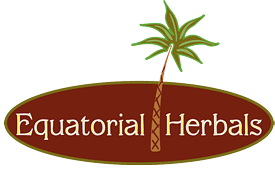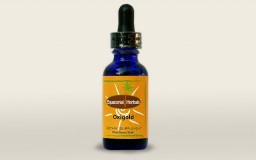
AFRICAN GINGER
$36.00 for 2 fl. oz.
$19.00 for 1 fl. oz.
MAINTAINS A HEALTHY INFLAMMATORY RESPONSE *
HISTORY OF TRADITIONAL — USE OF GINGER
Ginger and her cousin Turmeric are proud members of the zingiberaceae family and
grow in sub-tropical, volcanic soils in the southern hemispheres. The plant is thought to
have originated in tropical Asia and is widely cultivated in the Caribbean and Africa. All
cultures report similar uses of this plant. It has been used as a favorite “diffusive”
circulatory stimulant and heating agent; calming nausea, removing phlegm or catarrh in
a wet cough. It has also been used to support a healthy inflammatory response. Ginger
is also widely used for motion sickness. Ginger is one of the most widely consumed
aromatic spices on the planet.
MECHANISM OF THERAPUTIC ACTION
Ginger contains hundreds of chemical components. The highest percentages of
chemicals are the volatile oils (camphene, phellandrene, zingiberine, zingiberol,
eucalyptol, citral, borneol, and linalol) and the phenolic compounds (gingerol,
zingerone, shogaols) and resins. Ginger has been shown in numerous clinical trials to
work as well as or better than Non-Steroidal Anti-Inflammatory medicines without the
adverse events reported such as gastric mucosal irritation and ulceration. It is thought
that Ginger promotes normal production of Thromboxanes and Leukotrienes which
would explain its action on the immune system as well as its ability to promote healthy
circulation and inflammatory responses.
SIDE EFFECTS AND TOXICITY
There have been no reports of significant side effects or severe toxic reactions following
the consumption of ginger in usual therapeutic doses. This fact and the use of ginger
for thousands of years by many different cultures attest to its safety. Ginger has been
approved by the German Commission E and is on the FDA’s GRAS list
HISTORY OF GINGER IN SOUTH AFRICA
Siphonochilus aethiopicus is found in forest of KwaZulu/Natal, Mpumalanga, Northern
Province and Swaziland. This rare African plant of the Ginger family is regarded as
Africa’s natural anti-inflammatory, and it has many other uses. The Zulu know this plant
as “Indungulu”. They use the rhizome in a cough and cold remedy, in tonics, and in
treating hysteria. Historically the plant is taken in winter to treat fevers. Indungulu is also
used as a malarial remedy and for the relief of menstrual pain, for which purpose the
rhizomes were chewed. Elsewhere in the region, rhizomes have been employed in the
treatment of rheumatism, toothache, neuralgia, and to decongest nasal passages.
PHARMACOLOGY OF AFRICAN GINGER
Indungulu (S. aethiopicus) has been used in South Africa for centuries for safely treating
headache, pain and inflammation. The plant belongs to the Ginger family, but has a
completely different phytochemical profile to other commercially available ginger. In a
recent pharmacological study, researchers tested a number of medicinal plants used in
the treatment of pain and inflammation. In an assay which considered the ability of
materials to disrupt the inflammation process, extracts of S. aethiopicus were found to
exhibit higher inhibitory activity than indomethacin, a standard pharmaceutical drug
used as an anti-inflammatory.
In another study, plants used by Southern African traditional healers for the treatment of
menstrual pains were screened for prostaglandin-synthesis inhibitors and the ability to
reduce isolated uterine muscle contraction using the cyclooxygenase and in vitro
uterine bioassays respectively. Ten plants used by traditional healers for menstrual
pains were assayed for cyclooxygenase inhibitory activity. Several plant extracts
exhibited high inhibitory activity in the assay. The highest activity was obtained with an
ethanolic extract of Siphonochilus aethiopicus. The study demonstrated that African
Ginger (S. aethiopious) has among the highest cyclooxygenase-1 inhibitory activity of
the medicinal plants tested.
WHY — USE AFRICAN GINGER
Using several processing techniques, the natural oil of S. aethiopicus is extracted for
use in Indungulu. This potent ginger oil contains 20% total pungent compounds,
calculated as 6-Gingerol and 6-Shogaol, making Indungulu the most potent ginger
extract available. The ginger oil in Indungulu contains a level of total pungent
compounds that cannot be equaled by other forms of ginger available on the market.
REFERENCES
1. Lindsey K., et. al. Screening of plants used by Southern African traditional healers in
the treatment of dysmenorrhoea for prostaglandin-synthesis inhibitors and uterine
relaxing activity. J. Ethnopharmacology 1999; 64: 9-14.
2. Levy A., et. Al. 6-Shogaol reduced chronic inflammatory response in the knees of
rats treated with complete Freund’s adjuvant. BMC Pharmacology 2006, 6:12.
3. Holtmann S, Clarke A. The anti-motion sickness mechanisms of ginger. Acta
Otolaryngol. 1989;108:168-174.
4. Yamahara J, Huang Q, et al. Gastrointestinal motility enhancing effects of ginger and
its active constituents. Chem Pharm Bull. 1990;38(2):430-431.
5. Langner E, Greifenberg S, Gruenwald J. Ginger: history and use. Adv Ther. 1998;15:
25-44.
6. Altman R. D. and Marcussen K. C. Effects of a ginger extract on knee pain in patients
with osteoarthritis. Arthritis Rheum 2001;44(11):2531-2538.
7. Arfeen Z., Owen H., et. al. A double-blind randomized controlled trial of ginger for the
prevention of postoperative nausea and vomiting. Anaesth. Intensive Care 1995;23(4):
449-452.
8. Jewell D. and Young G. Interventions for nausea and vomiting in early pregnancy.
Cochrane.Database.Syst.Rev. 2002;(1):CD000145.


